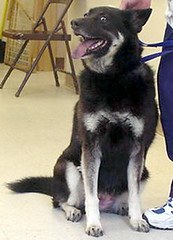How to Correct Common Behavioral Issues in Dogs
1. Excessive Barking
Barking is a natural form of communication for dogs, but when it becomes excessive, it can disrupt the peace at home and annoy your neighbors. Understanding why your dog is barking is the first step in addressing this behavior.
Understanding the Cause
- Attention-Seeking: Dogs may bark to get your attention, whether they want to play, go out, or simply be petted.
- Fear or Anxiety: Barking can also stem from fear of strangers, loud noises, or environmental changes.
Solutions
To effectively manage excessive barking, consider the following steps:
- Identify Triggers: Keep a journal of situations that cause your dog to bark, such as other animals passing by or specific noises.
- Training Techniques: Implement positive reinforcement by rewarding your dog with treats and praise when they remain quiet during triggering situations. Gradually expose them to these triggers while rewarding calm behavior.
Real-World Example: One dog owner noted that their dog, Bella, barked every time a car passed by. By desensitizing Bella to the sound of cars and rewarding her for staying quiet, the barking decreased significantly within just a few weeks.
2. Destructive Chewing
Chewing is a normal behavior for dogs, especially puppies. However, when adult dogs chew destructively, it can be a sign of boredom, anxiety, or lack of appropriate chew toys.
Recognizing the Problem
- Age Factor: Puppies naturally chew as they teethe, while adult dogs may chew out of boredom or separation anxiety.
- Boredom & Lack of Stimulation: Dogs left alone for too long or without enough physical activity can find trouble through chewing.
Solutions
Here’s how to curb destructive chewing:
- Provide Appropriate Chew Toys: Invest in high-quality, durable chew toys that can withstand strong jaws and keep your dog occupied.
- Increase Exercise & Mental Stimulation: Regular walks, play sessions, and interactive toys can offer the mental and physical engagement dogs need to negate unwanted behaviors.
Tip: Rotate your dog’s toys every few weeks to keep their interest piqued!
3. Jumping on People
Jumping is a common way for dogs to greet others, but not everyone appreciates this enthusiastic behavior. Teaching your dog alternative greeting methods can create a more welcoming atmosphere.
The Greeting Dilemma
- Excitement Overload: Dogs often jump out of sheer excitement when they encounter new people. It’s how they express joy, but it can be overwhelming.
Solutions
To manage jumping behavior:
- Teach the “Sit” Command: Train your dog that sitting calmly earns them attention, rather than jumping.
– Practice consistently using treats until they associate sitting with greetings.
– Ensure all family members enforce this training consistently!
Example: A local dog trainer reported significant improvements in how dogs greeted guests when the “sit” command was reinforced every time a person entered their home.
4. Leash Pulling
Walking your dog should be enjoyable; yet, leash pulling can transform a pleasant stroll into a battle of wills. Understanding why your dog pulls leads to a more cohesive walking experience.
Why It Happens
Leash pulling can occur for several reasons:
- Exploration Instincts: Dogs are naturally curious and want to explore their surroundings.
- Learning from Experience: Many dogs learn that pulling gets them to destinations more quickly.
Solutions
To teach proper leash manners:
- Use Positive Reinforcement: Reward your dog for walking beside you without pulling. This may involve stopping every time they pull away until they return next to you before continuing again!
- Try Training Tools: Consider using no-pull harnesses, which gently discourage pulling while ensuring your pup’s comfort.
Did You Know? According to a recent survey, nearly 70% of dog owners reported success in reducing leash pulling using positive reinforcement techniques.
5. Aggression Towards Other Dogs
Aggressive behavior towards other dogs can be concerning for both your dog’s safety and that of other pets. Identifying the triggers behind this aggression is crucial for effective correction.
Identifying Triggers
Aggression in dogs may arise from factors like:
- Fear-Based Reactions: Past trauma can lead to fear responses in different situations.
- Territorial Instincts: Some dogs may react aggressively when they perceive other dogs as threats to their space.
Solutions
Address aggressive tendencies using these methods:
- Socialization Classes: Enroll your dog in classes that emphasize controlled interactions under supervision. This helps build confidence and reduces fear.
- Seek Professional Help: If aggression persists, consult with a certified trainer who has experience with aggressive behaviors. Tailored strategies will help address specific issues your dog faces.
Conclusion
Correcting common behavioral issues in dogs requires a deep understanding of their motivations, coupled with consistent training rooted in positive reinforcement methods. Remember, patience is essential; noticeable changes take time, so celebrate small victories along the way! By committing to the journey of improvement alongside your pet, you’ll foster a healthier, happier relationship, making all those tail-wagging moments even more fulfilling.
Do you have a specific behavioral issue with your dog that needs addressing? Share your experiences in the comments below, and let’s work together to find solutions! If you found this guide helpful, feel free to share it with other dog owners who might benefit from it!
news via inbox
Nulla turp dis cursus. Integer liberos euismod pretium faucibua





